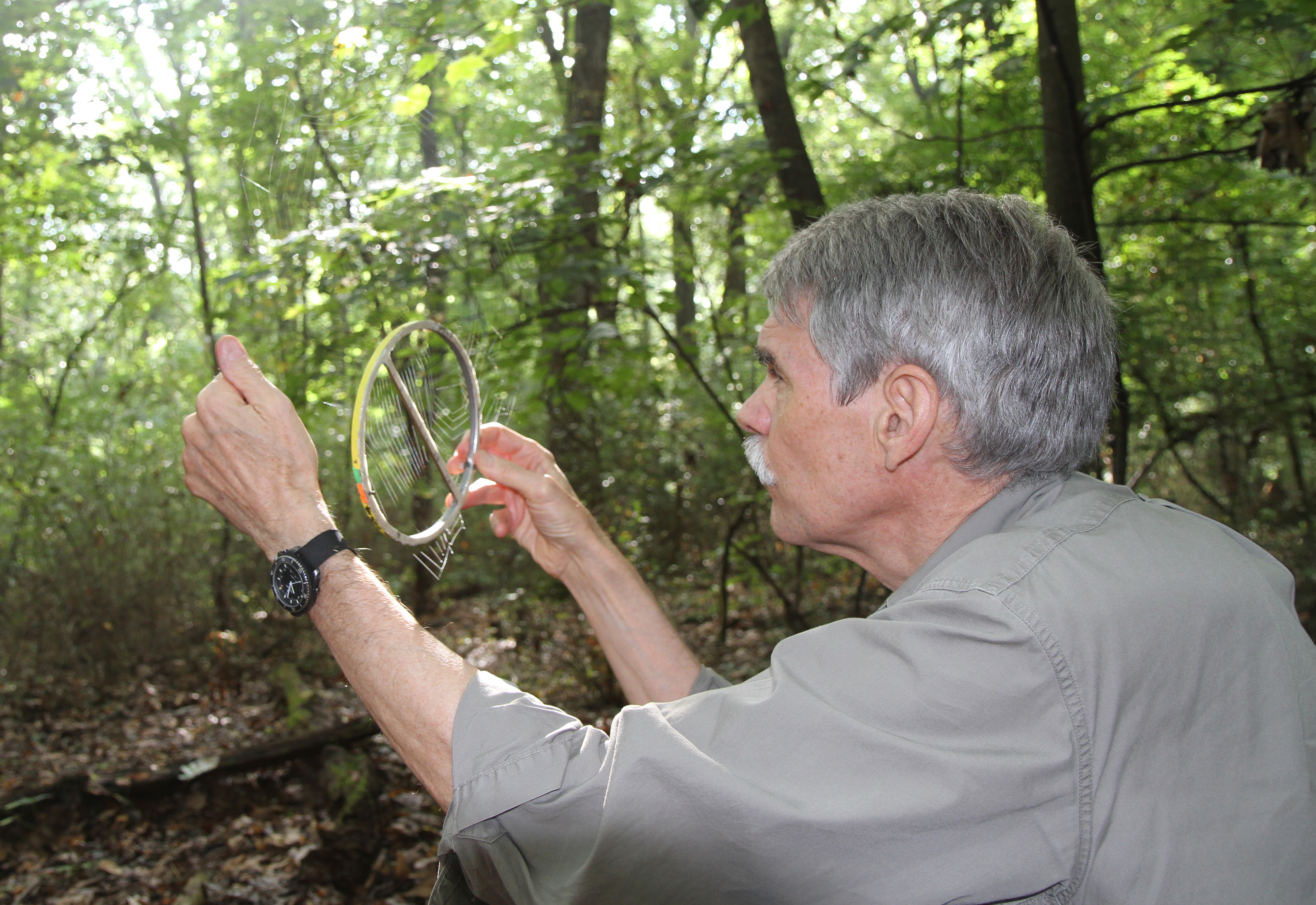Harbingers of Halloween spin smart system for scientists to mimic, create new products

A taut tug on the line signals the arrival of dinner, and the leggy spider dashes across the web to find a tasty squirming insect. The spider, known as an orb weaver, must perfectly execute this moment, from a lightning-fast reaction to an artfully spun web glistening with sticky glue.
This glue -- created when glycoproteins are secreted from a spider’s abdomen and interact with the atmosphere -- has been studied for the past 12 years by Brent Opell, a professor of biological sciences in the College of Science and a Fralin Life Science Institute affiliate.
Material scientists are interested in mimicking this glue -- nature’s great adhesive -- for human products, and rely on biologists to determine factors involved in its creation, as well as its capabilities and limitations.
Opell’s research team, which included Sarah Stellwagen, a 2015 biological sciences doctoral graduate, and Mary Clouse of Fairfax Station, Virginia, a senior majoring in biological sciences, recently determined that ultraviolet rays, specifically UVB rays, are an important environmental factor in the performance of spider glue.
They tested the webs of five local spider species -- three that catch prey in broad daylight, and two that hunt at night or in deep forest shade shaded areas.
They found that the webs of sun-soaked spiders were far more resistant to UVB rays than the webs of those that hunt in the dark or shade, perhaps indicating an important adaptive trait.The results were published recently in the Journal of Experimental Biology and could inform efforts to develop new adhesives.
"Our study adds UVB irradiation to the list of factors known to affect the performance of spider glycoprotein glue, which includes humidity, temperature, and strain rate," Opell said. "It is important to more fully understand these effects as material science moves toward producing environmentally non-toxic and energy conservative adhesives inspired by spider thread glycoprotein."
"The work by Opell's research team provides insight on a novel approach used by spiders to withstand UVB light," said Ali Dhinojwala, H.A. Morton Professor in Polymer Science at the University of Akron. "Currently, we add UV stabilizers to prevent degradation of polymers that are exposed to UVB light. Inspired by this study we can learn from the chemistry of spider glue to design new molecules to improve resistance to UVB light."
While Dhinjowala was not involved in this particular study, he has collaborated with Opell on other spider glue projects, such as a study on humidity’s effect on spider glue supported by the National Science Foundation.







